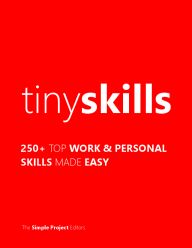Finding the right nursing bra can simplify breastfeeding and provide essential comfort and support during pregnancy and postpartum. Here's how to navigate the options and find your perfect fit.
What Is a Nursing Bra?
A nursing bra is designed to provide:
- Quick Access: Via clips, pull-down fabric, or other mechanisms for breastfeeding.
- Comfort: Accommodates changing breast sizes during pregnancy and postpartum.
- Support: Essential for preventing neck, back pain, and sagging.
Types of Nursing Bras
1. Sleep Nursing Bras
- Design: Soft fabric with pull-down or clip mechanisms for easy nighttime nursing.
- Use: Ideal for sleeping and lounging.
2. Soft-Cup Nursing Bras
- Design: Seamless bras with cups that lower via shoulder-strap hooks.
- Use: Versatile for sleeping, lounging, or casual errands.
3. Underwire Nursing Bras
- Design: Includes supportive underwires with nursing clips.
- Use: Better for larger breasts needing extra support.
- Note: Ensure a proper fit to avoid clogged ducts or mastitis.
4. Sports Nursing Bras
- Design: Wireless and made with stretchy materials like spandex and nylon.
- Use: Designed for active nursing moms, now easier to find.
5. Tank-Top Nursing Bras
- Design: Nursing bras built into tank tops with discreet clips.
- Use: Perfect for hot weather or layering under clothes.
6. Pumping Bras
- Design: Hands-free bras or bustiers compatible with most electric breast pumps.
- Use: Ideal for multitasking while pumping.
Key Features to Look For
1. Support
- Thick straps, strong underbands, and padding for proper breast and back support.
- Essential for preventing sagging and neck strain.
2. Coverage
- Full Coverage: Accommodates fluctuating breast sizes and helps with nursing privacy.
- Minimalist Styles: Available for those who prefer less coverage.
3. Closure Mechanisms
- One-Hand Test: Can you unclip or pull down the bra with one hand
- Popular options include:
- Squeeze/push latches.
- Stretchy pull-down bras for quick access.
4. Adjustability
- Multiple hook positions and adjustable straps accommodate changes in size during pregnancy and postpartum.
5. Style & Color
- Options now include colors beyond white, with fun prints and neutral tones.
When to Shop for a Nursing Bra
- Timing: Around 36 weeks of pregnancy when breast size stabilizes closer to postpartum size.
- Expect to go up one band size and cup size from your pre-pregnancy measurements.
How to Find the Perfect Fit
Step 1: Professional Fitting
- Get measured at maternity stores, department stores, or lactation centers.
- Measurements ensure a proper fit to avoid tightness, discomfort, or reduced milk supply.
Step 2: Try Different Styles
- For Home: Soft, less supportive bras or tanks with flexible material.
- For Public: Structured, padded bras to prevent leaks and provide lift.
Step 3: Test at Home
- Order a few styles and sizes to try on at home.
- Look for brands with clear sizing charts and flexible return policies.
Alternative Options
- Use stretchy sports bras or tank tops with built-in support.
- Front-zip bras or traditional bras with front closures can also work for nursing.
Tips for Success
- Closures: Practice using clips or pull-down mechanisms before purchasing.
- Budget-Friendly: Consider secondhand bras or hand-me-downs for variety.
- Comfort First: Focus on bras that feel great during postpartum recovery.
Do You Need a Nursing Bra?
While nursing bras are helpful, they’re not mandatory. Stretchy or front-closing bras might work for some. Ultimately, choose what’s comfortable, convenient, and supportive for you.
Remember: Every body and preference is unique—your ideal nursing bra is the one that feels perfect for you!
Next: Read 2500+ consumer guides to shopping, electronics, appliances, home services, cars, money and more.

